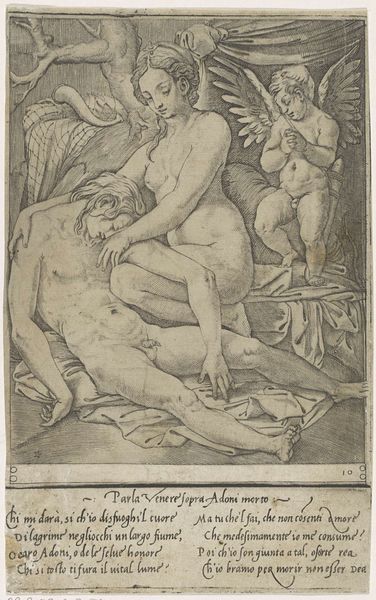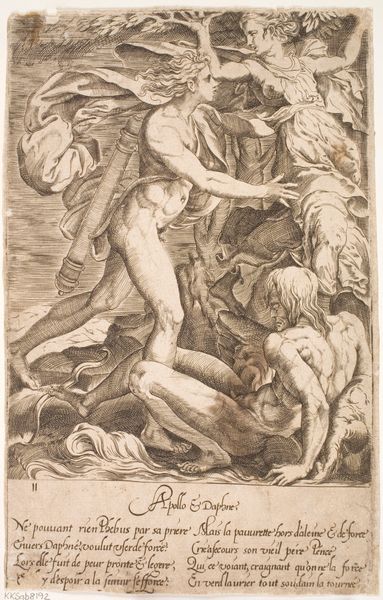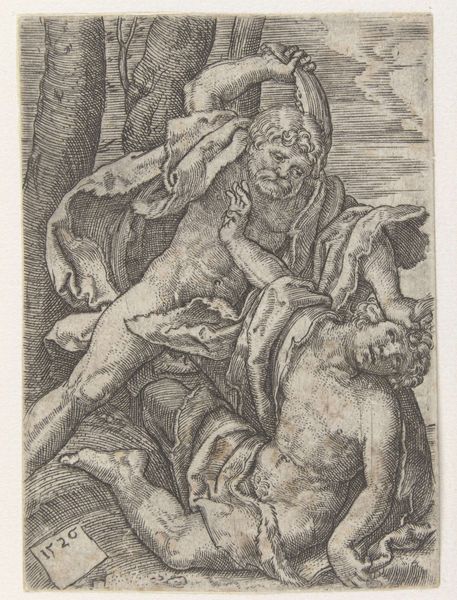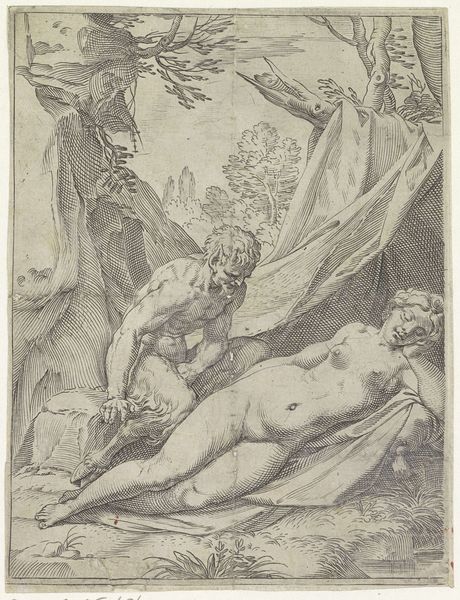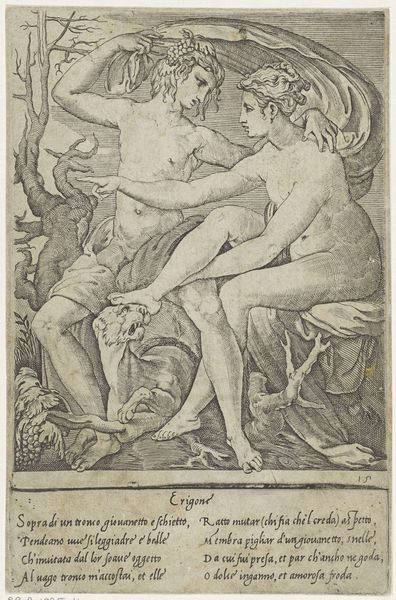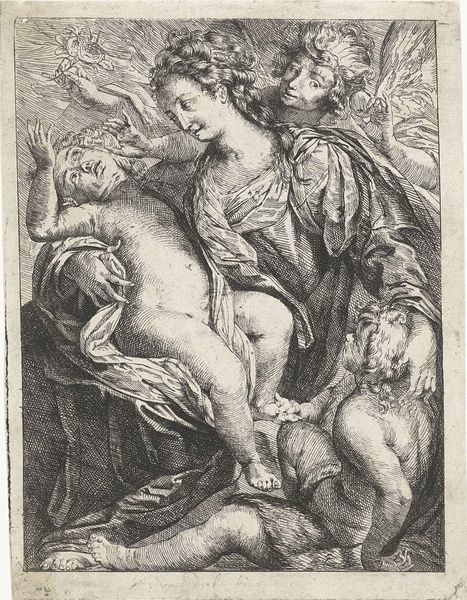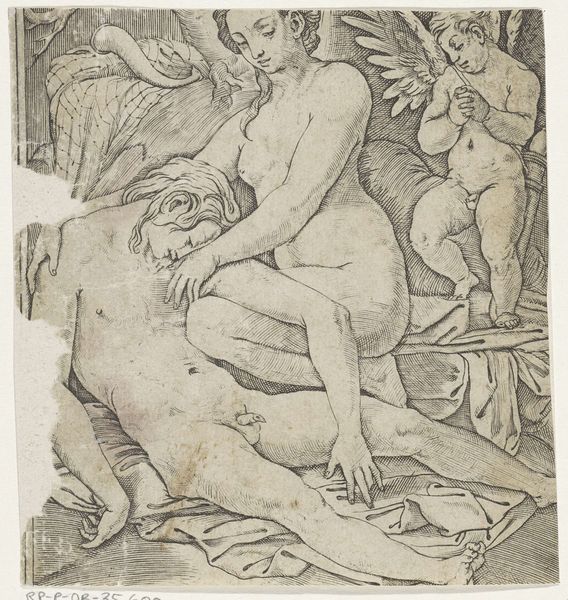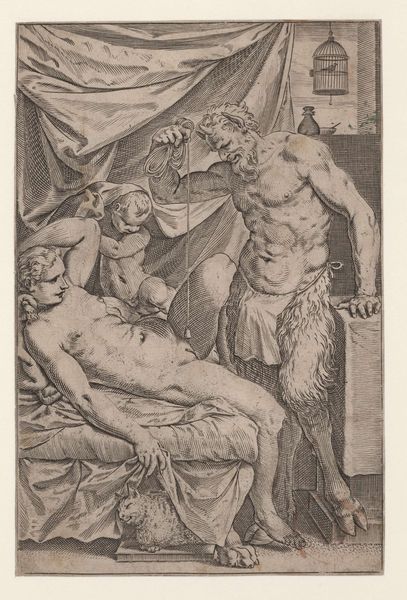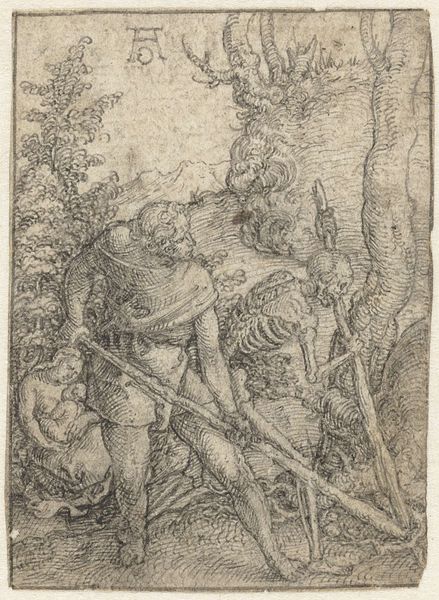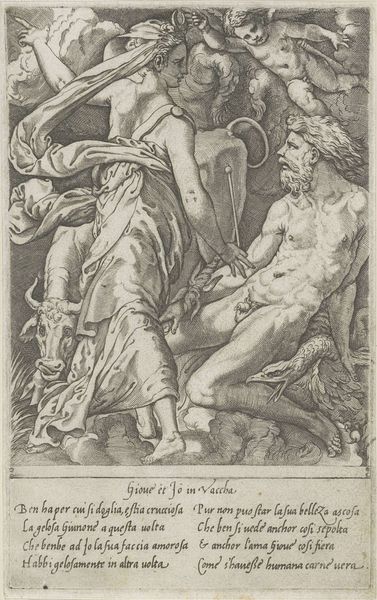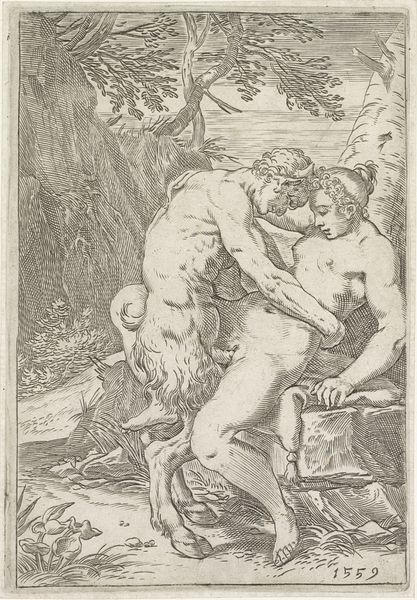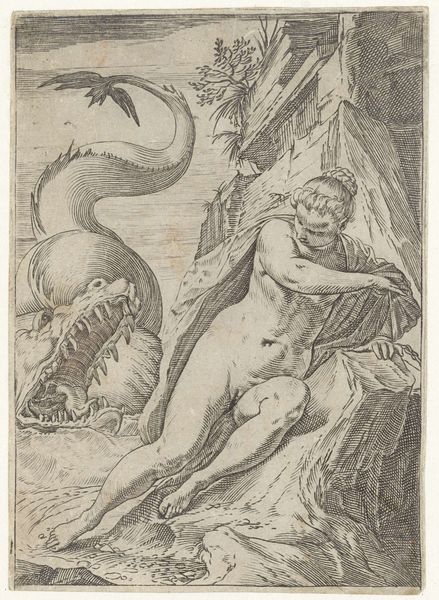
intaglio, engraving
#
allegory
#
intaglio
#
figuration
#
11_renaissance
#
italian-renaissance
#
nude
#
engraving
Dimensions: height 215 mm, width 139 mm
Copyright: Rijks Museum: Open Domain
Editor: We're looking at "Loves of the Gods," an engraving by Giovanni Jacopo Caraglio, created sometime between 1515 and 1565. It’s part of the Rijksmuseum's collection. My first thought is how dynamic it is, almost like a freeze-frame of a dramatic moment. The composition feels really packed with figures and movement. What do you see in this piece from a formal perspective? Curator: The most striking aspect is the masterful manipulation of line. Observe how Caraglio employs dense, almost chaotic hatching to create areas of deep shadow, juxtaposed with areas of relatively clear, unburdened lines which define the figures' musculature. The interplay generates a sense of almost frenetic energy that animates the entire scene. Note how the texture of Daphne's transforming skin differs texturally from Apollo's smooth body. This, again, relies on the considered use of line. Editor: It’s interesting how you point out the differentiation using just lines. It almost gives different weight to the two figures. But why choose this technique? Curator: Consider intaglio’s inherent properties. Each line requires deliberate, physical carving. It's not merely representational. The medium thus dictates a particular mode of vision. It demands meticulous planning, creating a dialogue between artist and material, leading to the emphasis we find on textural contrast and directional movement. The formal arrangement here highlights a transition, echoing transformation in the bodies depicted. The figures themselves become manifestations of the very artistic process. Editor: So, the medium itself reinforces the theme. I'd never thought about that. I was focusing on the story alone, not how the process contributes meaning to the figures. Curator: Precisely. And by understanding the artist's handling of line, the relationships and contrasts, we unlock layers of interpretation beyond mere narrative. Editor: Thank you. Thinking about form and artistic choice offers another perspective on the artist's decisions. It opens new ways to appreciating Renaissance engravings.
Comments
No comments
Be the first to comment and join the conversation on the ultimate creative platform.

